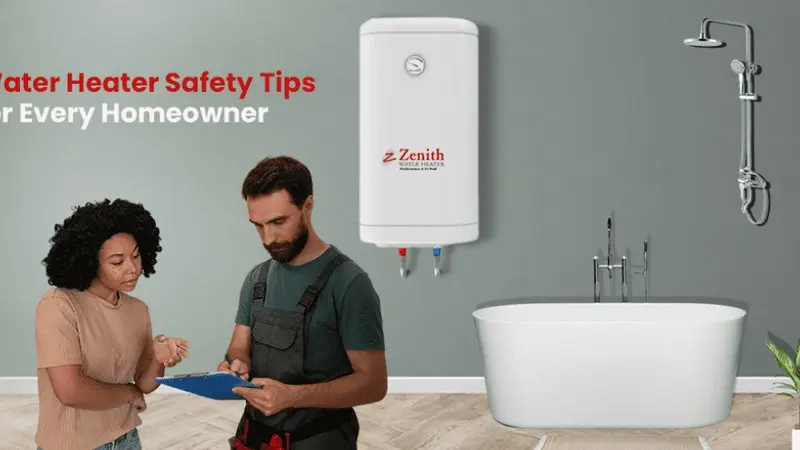Keeping your water heater in optimal shape ensures you always have hot water when you need it and minimizes the risk of unexpected breakdowns. Staying on top of routine maintenance is the most effective way to boost efficiency, save money, and extend the life of your appliance. If you’re unsure about any step or need professional guidance, connect with a trusted water heater service Dallas, TX for expert support and reliable results.
Water heater issues can quickly become inconvenient or even damaging if overlooked. Fortunately, most essential maintenance tasks can be done at home with basic tools and a little know-how. Below are the key steps to keeping your water heater running smoothly and safely—see how these top practices can help you maintain comfort throughout the year.
Key Takeaways
- Regular maintenance helps extend the lifespan and improve the efficiency of your water heater.
- Flushing the tank annually removes sediment buildup.
- Inspecting and replacing the anode rod prevents internal corrosion.
- Testing the temperature and pressure relief valve ensures safety.
Flush the Tank Annually
Sediment and mineral buildup are common in most water heaters, especially in areas with hard water. These deposits settle at the base of the tank, reducing heating efficiency and even causing the tank to overheat or fail prematurely. Flushing your water heater tank annually is crucial for optimal performance and longevity.
How to Flush the Tank:
- Turn off the gas or electricity supply to the water heater.
- Attach a garden hose to the drain valve at the base of the tank.
- Open the valve, allowing water to flow into a safe drainage area until the water runs clear.
- Shut the valve, detach the hose, and restore power or gas.
Flushing the tank not only enhances efficiency but also prevents damage caused by overheating or excess pressure.
Inspect and Replace the Anode Rod
The anode rod is designed to attract corrosive particles in the water, protecting the inside of your tank from rust. Over time, the rod itself will corrode away, so inspecting and replacing it every two to three years is essential.
Steps to Inspect the Anode Rod:
- Switch off the water heater’s power or gas supply.
- Drain several gallons of water from the tank.
- Unscrew the anode rod from the top with a socket wrench.
- Check for corrosion—replace the rod if it is more than half worn away.
Investing in regular anode rod checks extends your heater’s lifespan.
Test the Temperature and Pressure Relief Valve
Safety is a top priority. The T&P relief valve prevents your tank from building up too much pressure—a crucial safeguard against leaks or even explosions. Testing it once a year ensures it responds properly under stress.
Also read: JalbiteBlog Food Trends by JustALittleBite
Testing Instructions:
- Place a bucket under the discharge pipe.
- Lift the T&P valve lever briefly to release a bit of water.
- Ensure the valve closes again and stops water flow immediately.
Set the Thermostat to 120°F
Setting the water heater thermostat to 120°F is the sweet spot between hot water needs and energy savings. It’s hot enough for typical household tasks but not so high that it poses a scald risk or drives up utility bills.
How to Adjust the Thermostat:
- Find the thermostat dial on the front or side of the unit.
- Use a flathead screwdriver to adjust the setting to 120°F.
Insulate the Water Heater and Pipes
Insulation helps your water heater maintain the desired temperature more efficiently, reducing energy use and heating time. Applying a specially designed heater blanket to the tank and foam sleeves to the first few feet of the hot and cold pipes can make a noticeable difference. According to This Old House, proper installation is key—be careful not to cover vital components such as the thermostat or burner. With correct insulation, standby heat losses can be reduced by up to 45%, making this a highly cost-effective way to save energy.
Schedule Professional Inspections
While DIY maintenance covers the basics, a professional inspection once a year is the best way to identify internal issues or inefficiencies you might not notice. According to Angi’s guide on water heater maintenance, a licensed plumber will inspect the heating elements, test safety features, check for corrosion, and fine-tune your unit as needed. Detect tiny leaks early to prevent large-scale water damage, test all primary and backup safety components, and optimize the unit for longevity and efficiency. Investing in expert attention helps keep your water heater running longer and can help you avoid unexpected breakdowns.
Monitor for Signs of Trouble
Routine checks make it easier to identify problems before they escalate into emergencies. Look out for inconsistent temperatures, unusual noises (such as popping or rumbling), rusty or unpleasant-smelling water, and visible leaks around your unit. If you notice any of these warning signs, prompt action can prevent costlier repairs or water damage. Understanding what your water heater is telling you is essential to avoid disruption. Stay prepared by learning about common issues in this homeowner’s resource.
Conclusion
Staying proactive with water heater maintenance delivers peace of mind, boosts efficiency, and maximizes your investment. By following these simple yet effective steps, you’ll minimize the risk of breakdowns and enjoy reliable hot water whenever you need it. Whether you manage basic tasks yourself or rely on a skilled technician, regular care is the key to a long-lasting, trouble-free water heater.
